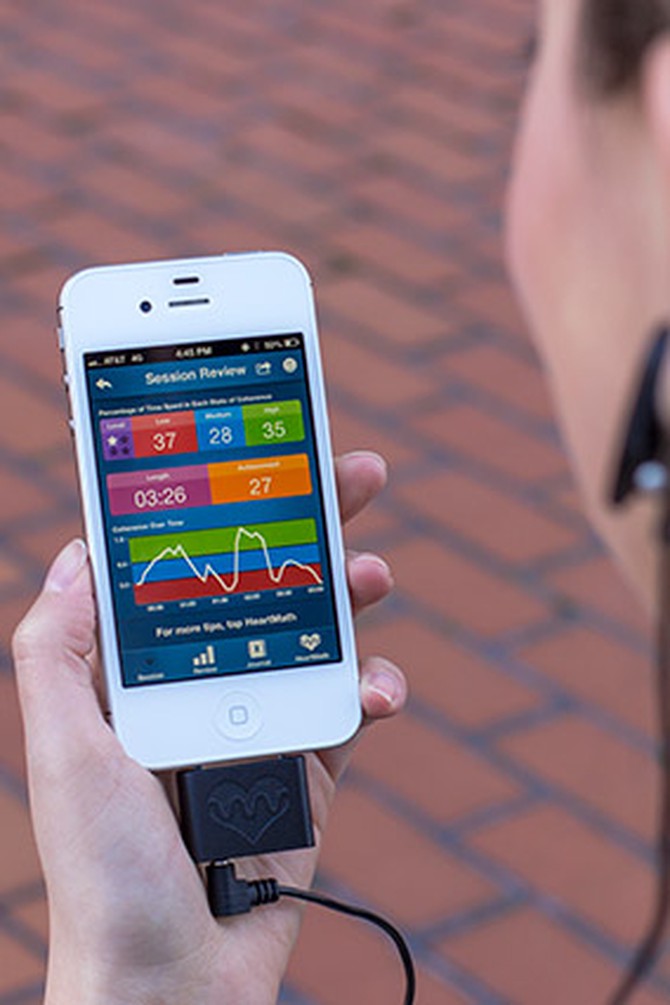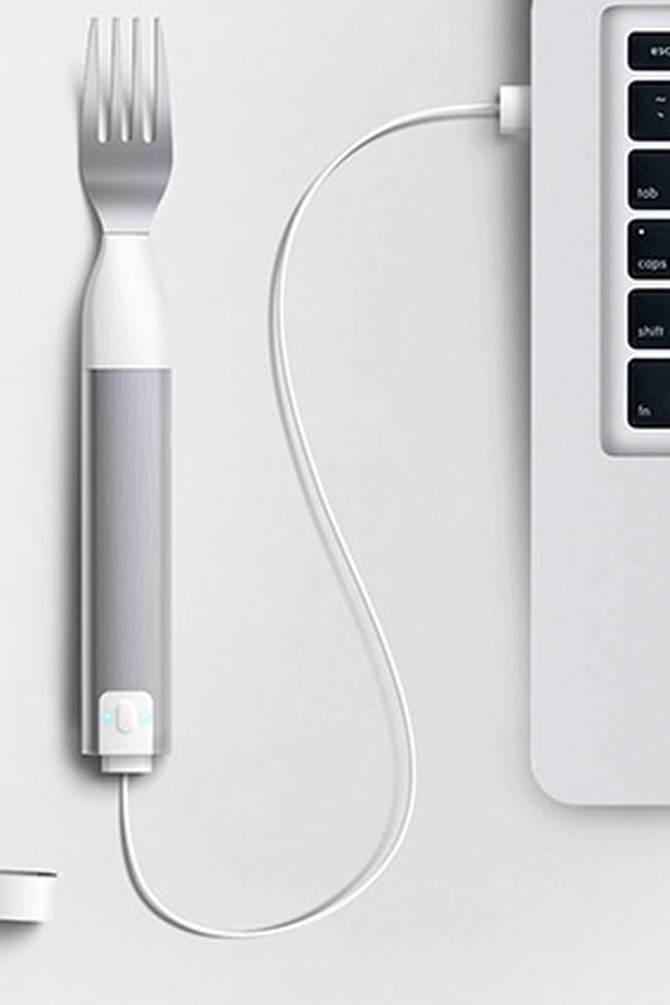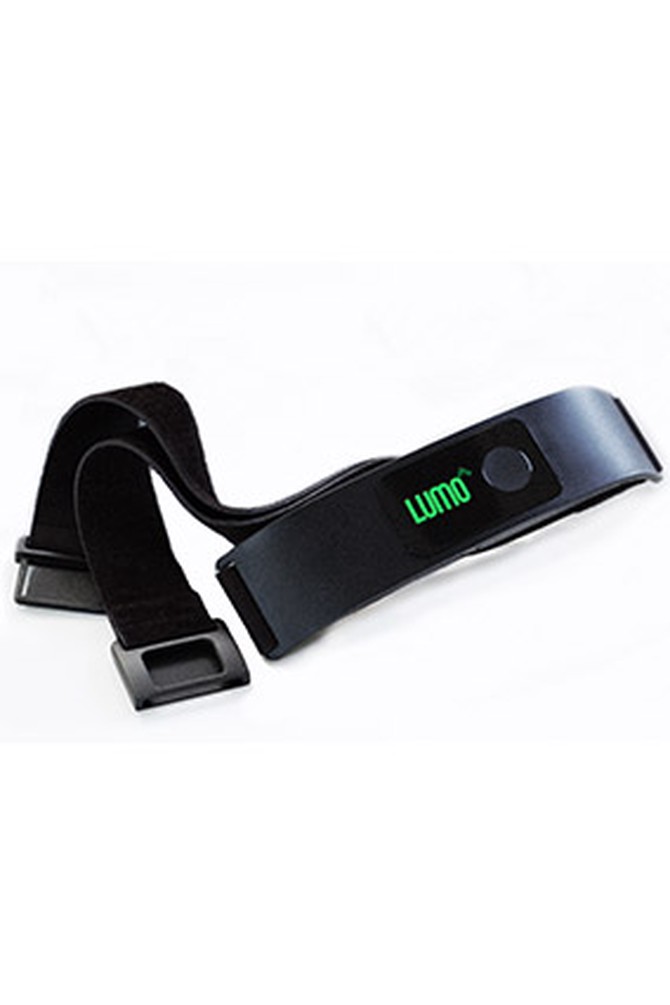3 Gadgets That Lead to a Happier, Healthier Life
They've been called "Big Mother"—gadgets designed to help you sit up straighter, breathe deeper, and slow down at mealtime. O editors test-drive three of the latest devices.

Photo: Courtesy of Heartmath
The Gadget: HeartMath Inner Balance Trainer
($99; InnerBalanceApp.com)
Goal: Dial down stress.
How it works: A sensor clips to your earlobe to track your heart rate.
Real-life road test: I attached the sensor to my ear while at the office (luckily, my hair covered it or I might have felt weird wearing it at work). When a few last-minute tasks made me late for an after-work event, the app picked up on my increasing heart rate and a message on my phone prompted me to inhale and exhale along with the onscreen breath pacer. Three minutes later, my anxiety had dissipated, leaving me feeling more energized than frantic.
Good idea or bad idea: More good than bad. I appreciated the reminders—"Breathe just a little deeper"—when the program sensed I was entering stress mode before I did.
— Ashley Williams, senior editor
Goal: Dial down stress.
How it works: A sensor clips to your earlobe to track your heart rate.
Real-life road test: I attached the sensor to my ear while at the office (luckily, my hair covered it or I might have felt weird wearing it at work). When a few last-minute tasks made me late for an after-work event, the app picked up on my increasing heart rate and a message on my phone prompted me to inhale and exhale along with the onscreen breath pacer. Three minutes later, my anxiety had dissipated, leaving me feeling more energized than frantic.
Good idea or bad idea: More good than bad. I appreciated the reminders—"Breathe just a little deeper"—when the program sensed I was entering stress mode before I did.
— Ashley Williams, senior editor

Photo: Courtesy of HAPILABS
The Gadget: Hapifork
($99, available in October; Hapilabs.com)
Goal: Curb mindless eating.
How it works: The fork buzzes when you take bites quicker than ten seconds apart.
Real-life road test: As O's health editor, I know that study after study has shown that mindless eating can lead to weight gain (the faster you eat, the more you eat). Could a high-tech fork fix that? After making stir-fry, I used the fork for the first time, and even though I was primed to expect the vibrations, I was surprised by how fast I ate. With every subsequent meal, it became easier to pace myself—and realize I didn't need as much food to fill me up.
Good idea or bad idea: Good—for a little while. It's impractical to use only one fork, but when I reverted to normal silverware, I still waited a few more beats between bites.
— Jihan Thompson, health editor
Goal: Curb mindless eating.
How it works: The fork buzzes when you take bites quicker than ten seconds apart.
Real-life road test: As O's health editor, I know that study after study has shown that mindless eating can lead to weight gain (the faster you eat, the more you eat). Could a high-tech fork fix that? After making stir-fry, I used the fork for the first time, and even though I was primed to expect the vibrations, I was surprised by how fast I ate. With every subsequent meal, it became easier to pace myself—and realize I didn't need as much food to fill me up.
Good idea or bad idea: Good—for a little while. It's impractical to use only one fork, but when I reverted to normal silverware, I still waited a few more beats between bites.
— Jihan Thompson, health editor

Photo: Courtesy of Lumoback
The Gadget: Lumoback
($149; Lumoback.com)
Goal: Stop slouching.
How it works: A sensor worn around your lower back vibrates when you slouch.
Real-life road test: Whenever I catch a glimpse of myself in a mirror while sitting, I'm horrified by how hunched over I am. Sitting up straight wouldn't be so hard if only I could remember to do it. However, once I strapped on the sensor, the constant vibrations were impossible to ignore! A color-coded stick figure appeared on my phone so I could see how I looked. When the little guy was green, I was good; when he was orange, I knew I needed to readjust.
Good idea or bad idea: Good. The sensor hid easily under my clothes, and while I mostly wore it at work, I naturally started sitting up straighter even when I didn't have it on.
— Emma Haak, assistant editor
Next: Sleep gadgets so weird they just might work
Goal: Stop slouching.
How it works: A sensor worn around your lower back vibrates when you slouch.
Real-life road test: Whenever I catch a glimpse of myself in a mirror while sitting, I'm horrified by how hunched over I am. Sitting up straight wouldn't be so hard if only I could remember to do it. However, once I strapped on the sensor, the constant vibrations were impossible to ignore! A color-coded stick figure appeared on my phone so I could see how I looked. When the little guy was green, I was good; when he was orange, I knew I needed to readjust.
Good idea or bad idea: Good. The sensor hid easily under my clothes, and while I mostly wore it at work, I naturally started sitting up straighter even when I didn't have it on.
— Emma Haak, assistant editor
Next: Sleep gadgets so weird they just might work
Published 09/06/2013

